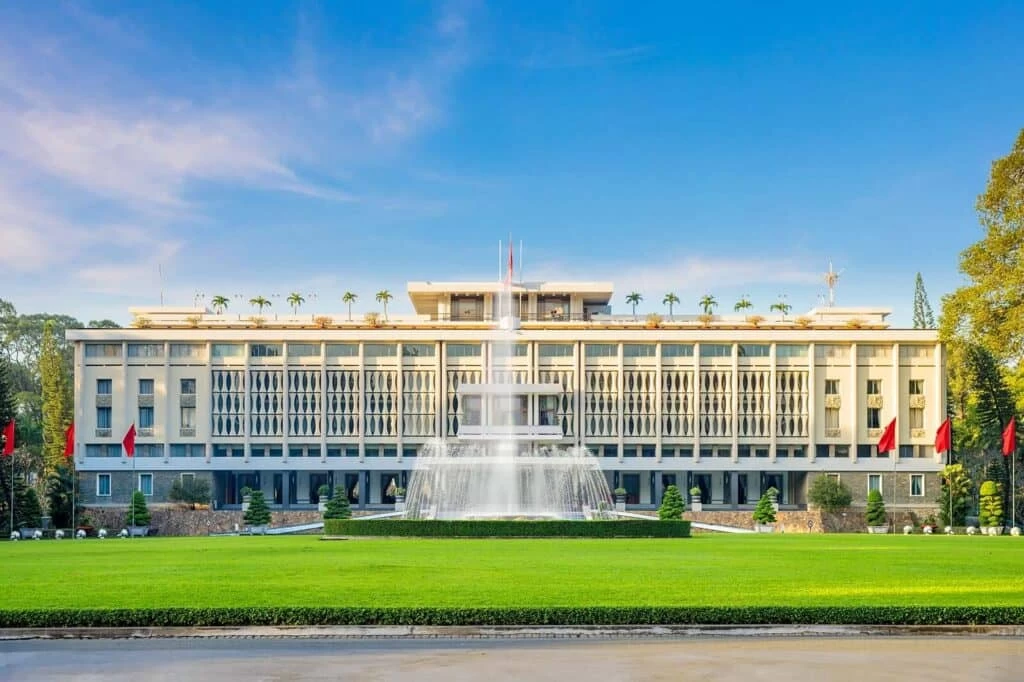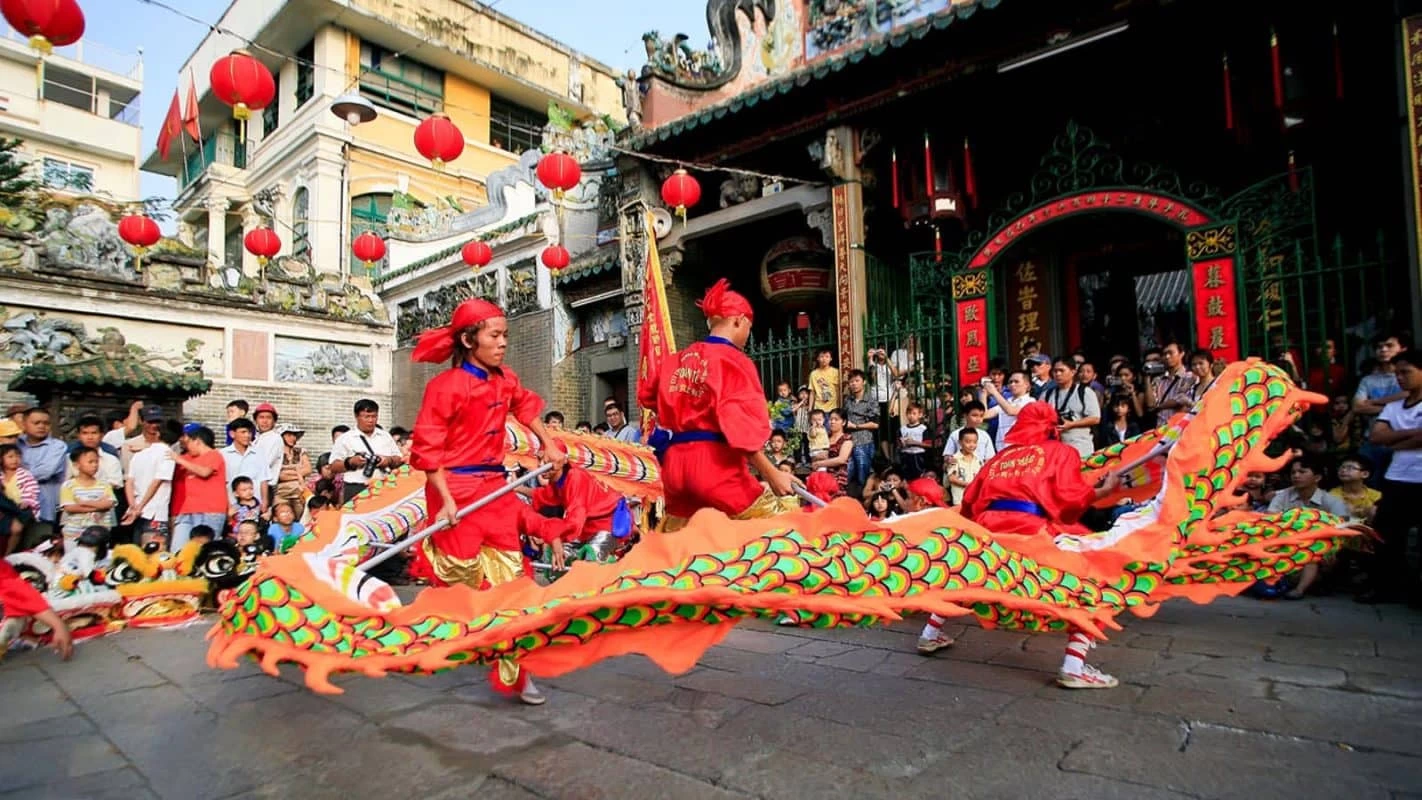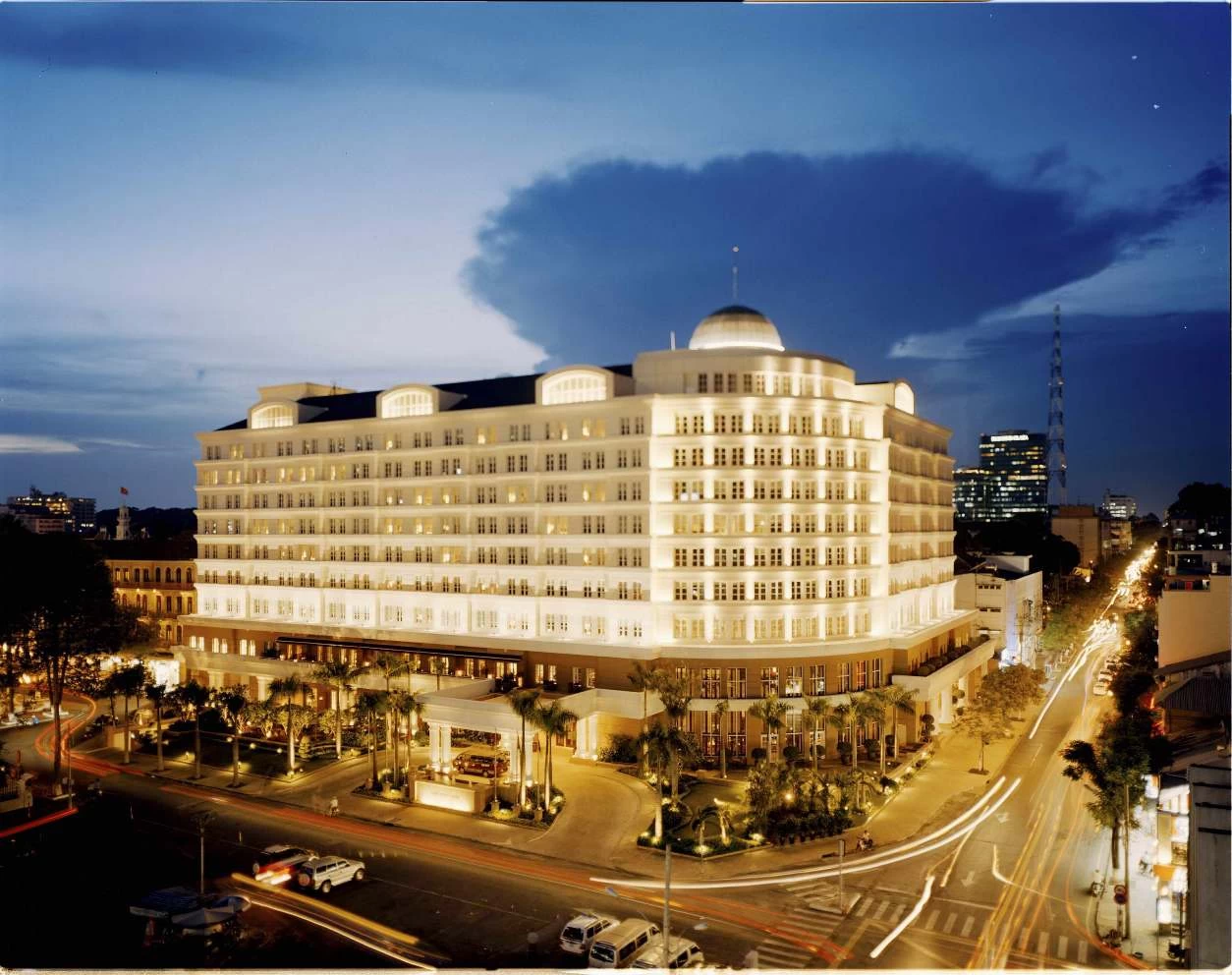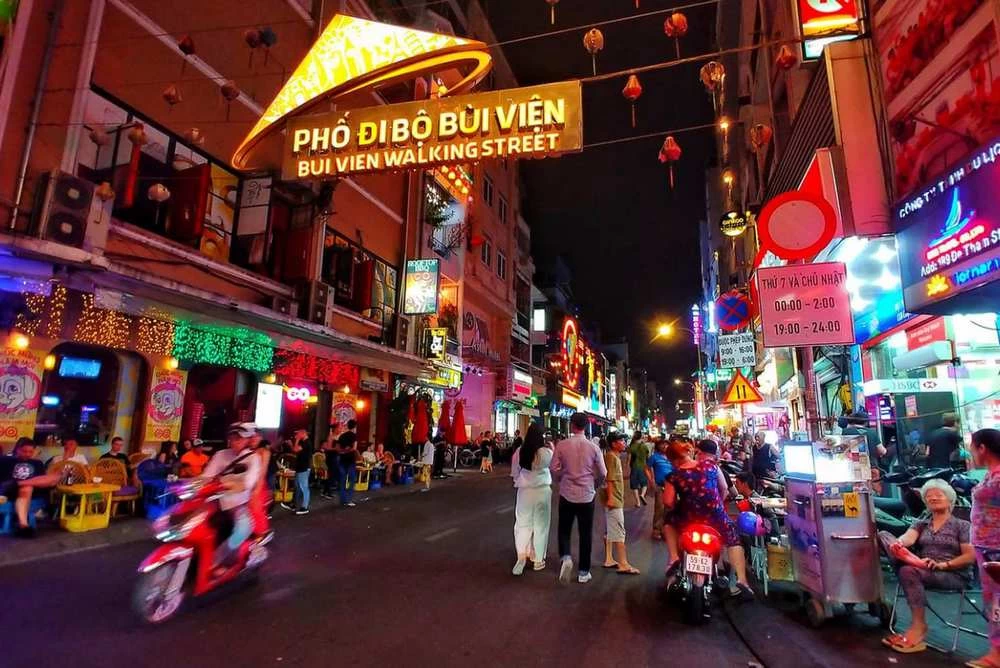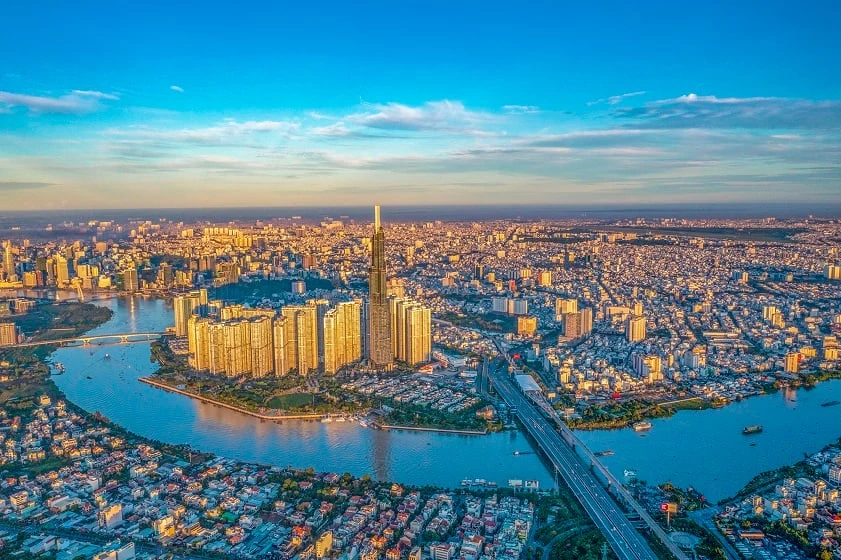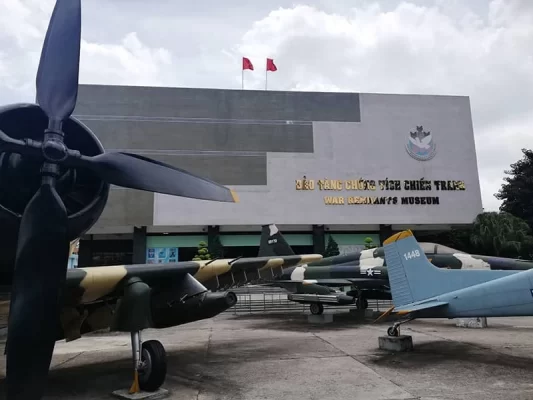
Let’s visit the War Remnants Museum!
Explore the War Remnants Museum in Ho Chi Minh City, a powerful journey through Vietnam’s history with exhibits on the Vietnam War, war crimes, and global peace efforts. Discover authentic artifacts, compelling photography, and firsthand accounts that illustrate the human impact of war. A must-visit destination for travelers seeking a deeper understanding of Vietnam’s past and cultural resilience. Follow Ula Travel now!
I. Introduction to the War Remnants Museum
1. Where is the War Remnants Museum?
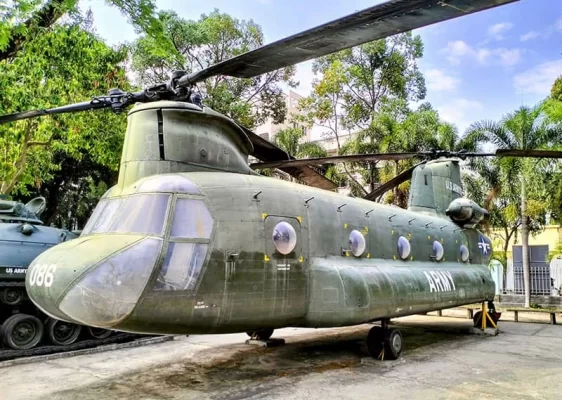
War Remnants Museum is a must-see destination.
The War Remnants Museum is located in the heart of Ho Chi Minh City, at 28 Vo Van Tan Street, District 3. This central location makes it easy for tourists to access, whether by taxi, motorcycle, or public transportation, from popular nearby areas such as Ben Thanh Market or the Independence Palace.
The museum’s positioning within Ho Chi Minh City underscores its significance as a historical and cultural landmark, offering visitors a convenient stop within a well-known area frequented by tourists.
2. History of the War Remnants Museum
Established in 1975, shortly after the end of the Vietnam War, the War Remnants Museum initially opened under the name “Exhibition House for U.S. and Puppet Crimes.” It was renamed the War Remnants Museum in 1993 as part of an effort to emphasize historical documentation rather than political interpretation.
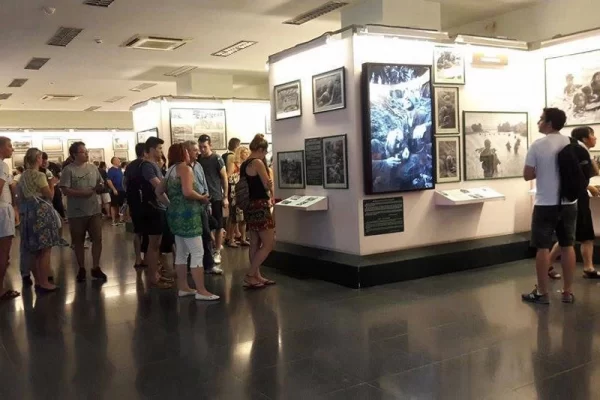
The War Remnants Museum was established shortly after the end of the Vietnam War.
The museum was founded with the mission to preserve and exhibit the documentation, photographs, and remnants from the war years, aiming to provide a comprehensive overview of the Vietnam War’s impact on Vietnam and its people. Its creation serves as a means to educate both local and international visitors about the effects of war on civilians, soldiers, and the environment, thus promoting awareness and advocacy for peace.
3. Cultural and Educational Significance
The War Remnants Museum stands as one of Vietnam’s most visited sites, with its exhibits and preserved relics drawing tourists, historians, and students from around the world. It plays a crucial cultural role by preserving Vietnam’s wartime history, illustrating the experiences and consequences of the conflict, and allowing future generations to reflect on the past.
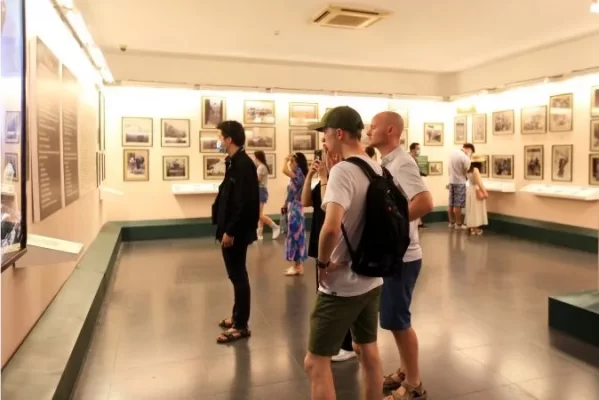
This museum has great historical educational value for visitors.
Educationally, the museum provides visitors with a deep, empathetic insight into the atrocities and resilience witnessed by the Vietnamese people. Through its exhibitions, which are often graphic and unfiltered, the museum intends to foster a global understanding of the costs of war and the value of peace. For international visitors, it serves as a stark reminder of humanity’s shared history and the importance of global peace efforts.
Click here: Ho Chi Minh City Tour
II. Featured Exhibits at the War Remnants Museum
1. Vietnam War Exhibition
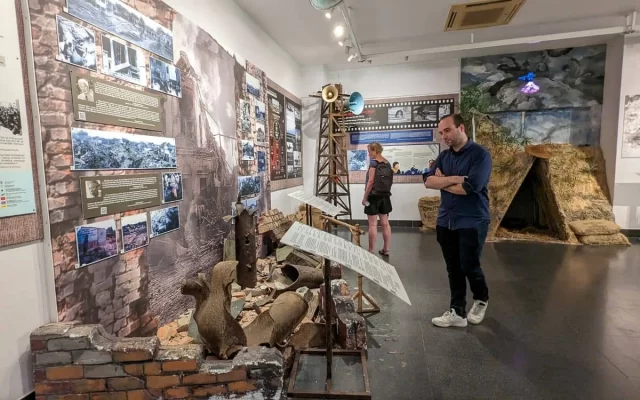
Visitors learn about the most brutal war in Vietnam.
The Vietnam War Exhibition presents a comprehensive look at one of the most significant conflicts of the 20th century. This section highlights the far-reaching impact of the war, not only on Vietnam but also globally. Through historical documents, photographs, and media archives, visitors gain insight into the political and social complexities that led to the war, as well as the challenges faced by both Vietnamese and American societies during and after the conflict.
Artifacts on display include original military correspondence, local testimonies, and visual recordings that capture the conflict from various perspectives. This exhibit is pivotal in helping visitors understand the resilience and cultural identity of Vietnam, shaped largely by this period.
Do not miss: Best things to do in Ho Chi Minh City
2. War Crimes Exhibition
The War Crimes Exhibition is among the most impactful sections of the museum, featuring disturbing yet important insights into the atrocities of war. The exhibit details the effects of various wartime atrocities on Vietnamese civilians, shedding light on chemical warfare, mass displacement, and civilian suffering.

War crimes are preserved and displayed in museums.
Key elements in this section include graphic photographs, written testimonies from survivors, and detailed accounts of significant incidents. This exhibit emphasizes the humanitarian cost of war, offering visitors an emotional and historical perspective on the impact of conflict on innocent lives. Due to the sensitive nature of this exhibition, it serves as a powerful reminder of the importance of peace and the protection of human rights.
3. Weaponry and Military Equipment Exhibition
In the Weaponry and Military Equipment Exhibition, visitors have the opportunity to explore an extensive collection of military artifacts used during the Vietnam War. This section displays a range of weapons and tactical equipment, including tanks, artillery, helicopters, and infantry weapons used by both sides of the conflict.
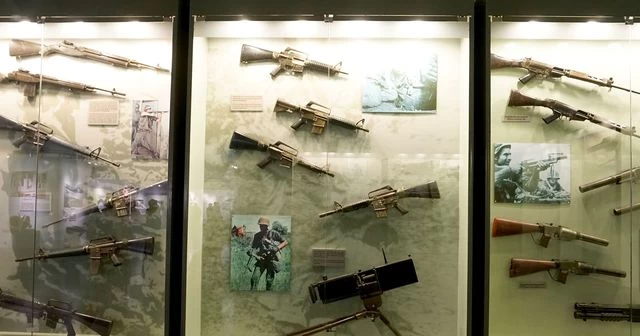
Weapons used in war.
The exhibit demonstrates the advancements in military technology at the time and allows visitors to see, up close, the machinery that played a significant role in the war. Additionally, descriptions accompany each piece, providing background on its use, origin, and the role it played in the war’s events. The display offers a unique, hands-on experience, allowing visitors to grasp the intensity and scale of the conflict from a military perspective.
Learn more about: Cu Chi Tunnels Half Day Tour
III. Essential Information for Tourists
1. Opening Hours and Ticket Prices
- Opening Hours: The War Remnants Museum is open every day from 7:30 AM to 5:30 PM, allowing visitors ample time to explore its exhibits at their own pace. Early morning or late afternoon are generally the best times to visit, as the museum tends to be less crowded, making it easier to view displays and reflect on the exhibits in a quieter atmosphere. Additionally, visiting during these hours can help you avoid the midday heat, especially during Vietnam’s warmer months.
- Admission Prices: Entry to the museum costs approximately 40,000 VND for adults. Special rates and discounts may apply for children, students, and groups. Travelers planning to visit with a large group should inquire ahead about group discounts, as these offers can make a difference for tour groups or families.
2. Getting to the Museum
- By Public Transportation: Tourists can easily reach the War Remnants Museum using Ho Chi Minh City’s bus network, with several routes stopping within walking distance. Bus routes such as 18, 28, and 45 are popular options and provide convenient access for those staying in central areas. This is an economical choice, especially for solo travelers or small groups.
- By Taxi or Ride-Hailing Services: Taxis are widely available throughout Ho Chi Minh City and provide a comfortable, air-conditioned option for getting to the museum. Ride-hailing apps like Grab or Gojek are also popular choices among tourists and offer an easy-to-use alternative, with drivers often familiar with common tourist destinations like the museum.
- By Motorbike or Scooter: For a more adventurous experience, visitors can rent motorbikes or scooters to explore the city. This option is especially popular among tourists looking to experience Ho Chi Minh City like a local. However, be aware that traffic can be intense, so this option is best suited for confident riders.
3. Languages and Visitor Support
The museum is well-equipped to accommodate international tourists, offering display information primarily in Vietnamese, English, and French, making it accessible for a wide range of visitors.
Additional language support may include materials or guides in Japanese, Chinese, or Korean, depending on current resources. Tourists can also choose to hire audio guides in various languages for an enhanced experience, providing deeper insights into each exhibit.
IV. Visitor Experience at the War Remnants Museum
1. Tips for Visitors
To get the most out of your visit, plan for about 1.5 to 2 hours to thoroughly explore the exhibitions. The museum provides a thoughtful journey through the history of the Vietnam War and its effects on the nation and its people. It’s advisable for visitors to approach the museum with an open mind and respect, given the sensitive nature of some exhibits.
2. Ideal Time to Visit the Museum
For a quieter experience, consider visiting early in the morning or late in the afternoon when crowds are typically smaller. This timing allows for a more reflective experience, as the museum’s powerful exhibits are best appreciated with minimal distractions. Also, Vietnam’s hot climate means morning visits are often more comfortable.
Click here: Ho Chi Minh City Weather
3. Highlights Not to Be Missed
- Historical War Crimes Exhibit: This powerful exhibit features photographs, written testimonies, and documents depicting the devastating impacts of the war. Particularly noteworthy is the room dedicated to the My Lai Massacre, which includes firsthand accounts and visual representations of the incident. While this section can be emotionally challenging, it offers critical insight into the war’s impact on civilians.
- Agent Orange Aftermath Display: A profoundly impactful section, this exhibit reveals the long-term consequences of chemical warfare, particularly Agent Orange. It includes photos, preserved letters, and interactive content detailing the struggles faced by generations affected by this chemical. This area serves as a powerful reminder of the lasting effects of warfare.
- Collection of Military Equipment and Weaponry: Outside the museum building, visitors will find a fascinating display of decommissioned military vehicles, including helicopters, fighter planes, and tanks used during the conflict. The collection provides a tangible connection to history, as these machines were once active in the war.
- “Requiem” Photo Collection: A deeply emotional exhibit, “Requiem” is a collection of wartime photographs captured by journalists from different countries, some of whom lost their lives documenting the Vietnam War. This area is a tribute to their bravery and offers a unique, behind-the-lens perspective on the war.
4. Museum Amenities
- Guided Tours: For visitors looking for a deeper understanding of the museum’s content, guided tours are available. Knowledgeable guides provide historical context, answer questions, and share stories that enrich the visitor experience. It’s recommended to book in advance if possible, especially during peak tourist seasons.
- Café: The museum café offers a range of refreshments, from local Vietnamese coffee to cold drinks and light snacks. It’s a great spot to take a break, process the experience, and prepare for the rest of your visit.
- Gift Shop: Located near the entrance, the gift shop offers various memorabilia, including books on the Vietnam War, postcards featuring significant exhibits, and handcrafted souvenirs. These items provide visitors a way to remember their visit and gain further insights into the country’s history.
V. Nearby Attractions to the War Remnants Museum
Exploring the area around the War Remnants Museum opens up a range of cultural and historical experiences that add depth to your visit to Ho Chi Minh City. Here are some nearby attractions that will further enrich your understanding of Vietnamese history, culture, and lifestyle.
1. Reunification Palace (Independence Palace)
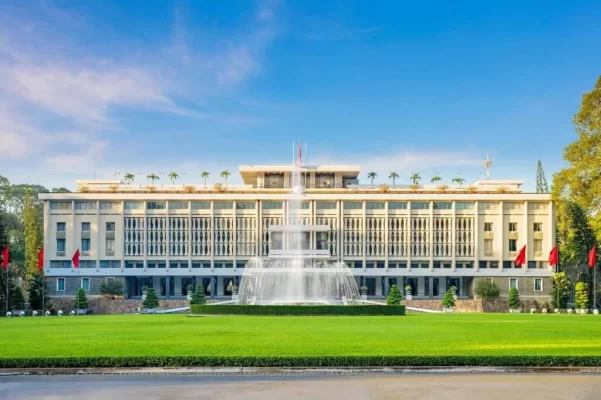
Reunification Palace
- Distance: Approximately a 10-minute walk from the War Remnants Museum.
- Highlights: Reunification Palace was the home and workplace of the President of South Vietnam during the Vietnam War and was famously the location of the fall of Saigon in 1975, marking the end of the war. Visitors can explore preserved meeting rooms, the president’s living quarters, and even an underground bunker.
- Tips: Take a guided tour to fully understand the significance of each room and historical event that took place here. It’s a great way to connect with the context of the War Remnants Museum.
More details: Best of Southern Vietnam
2. Notre-Dame Cathedral Basilica of Saigon
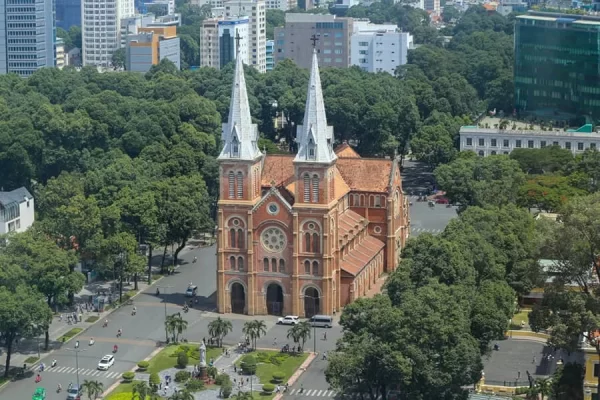
Notre-Dame Cathedral Basilica of Saigon
- Distance: About a 15-minute walk.
- Highlights: This stunning cathedral, built by French colonists in the late 19th century, is a classic example of neo-Romanesque architecture. Its red-brick façade and twin bell towers make it an iconic landmark of the city.
- Tips: Check the schedule for open hours, as the cathedral is often closed for private events. Nearby, you can find the Saigon Central Post Office, another architectural marvel that complements the visit.
3. Saigon Central Post Office
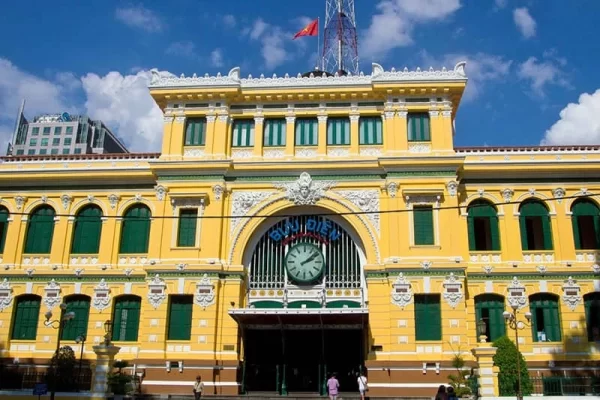
Saigon Central Post Office
- Distance: A short 15-minute walk from the War Remnants Museum.
- Highlights: Designed by Gustave Eiffel, this historic post office combines Gothic, Renaissance, and French colonial architectural elements. Inside, you’ll find a grand arched ceiling, vintage phone booths, and historical maps of Saigon.
- Tips: Don’t miss the souvenir shops and the opportunity to send a postcard from this beautiful building. It’s a simple yet memorable way to commemorate your visit.
You might be like: Discover The Ho Chi Minh City to Mekong Delta Tour
4. Ben Thanh Market
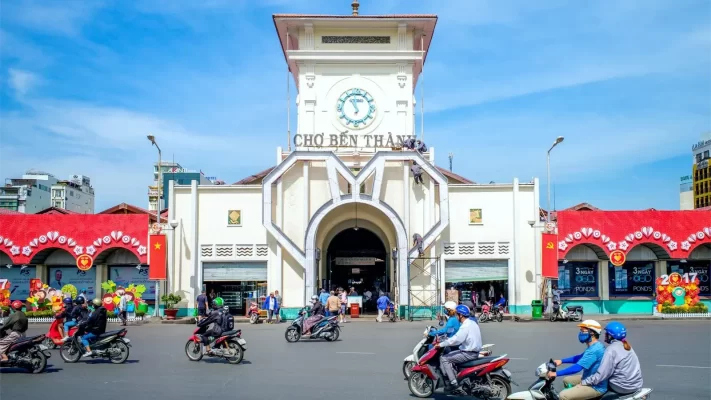
Ben Thanh Market
- Distance: Around 20 minutes by foot or a quick 5-minute drive.
- Highlights: One of the oldest and most iconic markets in Ho Chi Minh City, Ben Thanh offers a vibrant shopping experience with a variety of goods, from souvenirs to Vietnamese delicacies. It’s a fantastic place to experience local culture, shop for unique items, and try popular street foods.
- Tips: Be prepared to bargain, especially if shopping for souvenirs. Mornings and late afternoons are the best times to visit, as the market can get very crowded during peak hours.
5. Ho Chi Minh City Museum
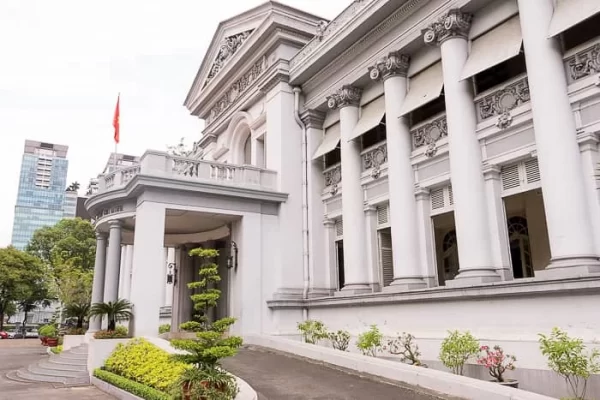
Ho Chi Minh City Museum
- Distance: Approximately 15 minutes on foot.
- Highlights: Housed in a beautiful French colonial building, this museum provides insight into the city’s history, culture, and the development of Vietnam. Exhibitions cover a wide range of topics, from the history of the Communist Party in Vietnam to local handicrafts and cultural artifacts.
- Tips: The museum’s architecture is itself worth appreciating, so take time to explore the interior design and surroundings, including the gardens.
6. Ho Chi Minh Opera House (Municipal Theatre of Ho Chi Minh City)
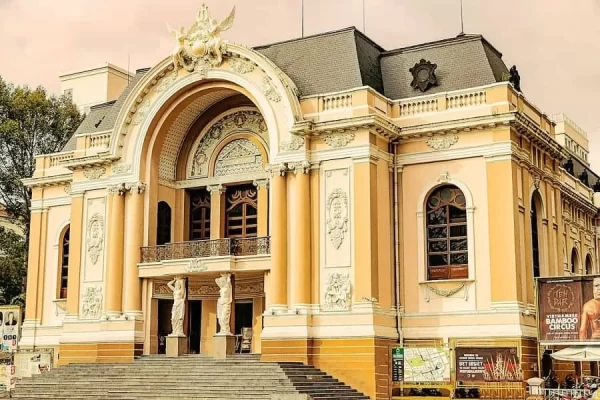
Ho Chi Minh Opera House
- Distance: Around 2 km from the museum, reachable in a short car or motorcycle ride.
- Highlights: This elegant French colonial building is known for hosting traditional Vietnamese performances, such as the À Ố Show, which combines contemporary circus arts with traditional Vietnamese themes.
- Visitor Tips: Check the schedule for upcoming shows to enjoy a cultural performance in a historical setting.
7. Bui Vien Walking Street
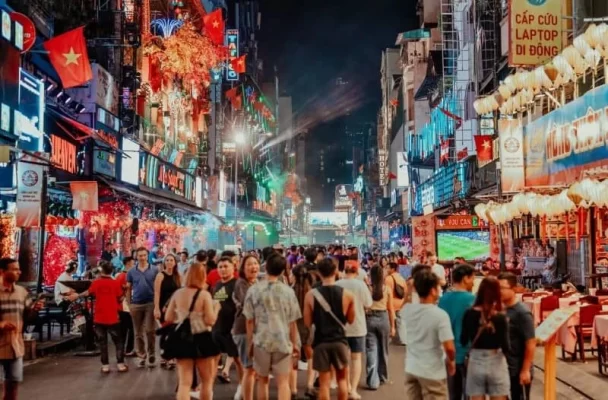
Bui Vien Walking Street
- Distance: Approximately 1.5 km from the museum, about a 15-minute walk.
- Highlights: Known for its nightlife, Bui Vien Walking Street is a popular area for tourists seeking a lively atmosphere with restaurants, bars, and entertainment.
- Visitor Tips: The street is best visited in the evening when it comes alive with street performers, music, and a variety of food and drink options.
Read more: Ho Chi Minh City Nightlife
8. Ho Chi Minh City Museum of Fine Arts
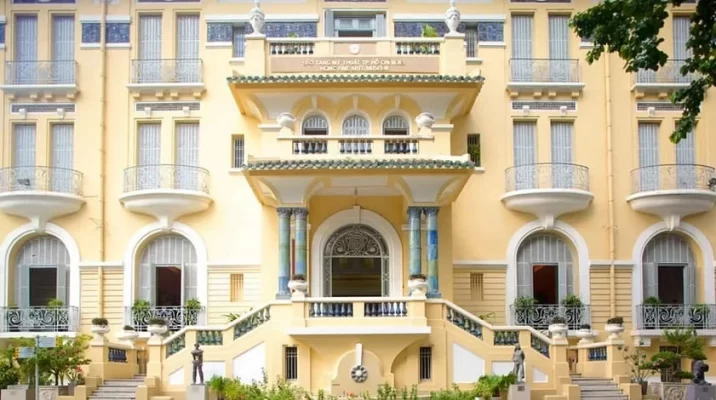
Ho Chi Minh City Museum of Fine Arts
- Distance: Approximately 2 km, about a 10-minute taxi ride.
- Highlights: Housed in a beautiful colonial-era building, this museum showcases a diverse collection of Vietnamese art, including contemporary pieces and traditional paintings and sculptures. The museum provides a glimpse into the evolving landscape of Vietnamese art from various historical periods.
- Visitor Tips: Pay attention to the special exhibitions that often feature local artists and emerging talent. The museum also has a lovely café where you can relax after exploring the galleries.
In conclusion, the War Remnants Museum is more than a historical landmark; it is a place of reflection, learning, and remembrance. For international visitors seeking to understand Vietnam’s resilient spirit and complex past, this museum offers an essential, thought-provoking experience. Each exhibit provides a vivid portrayal of the human side of war, inviting visitors to connect with history in a deeply personal way.
A visit here not only enriches one’s knowledge of Vietnam’s journey through adversity but also serves as a poignant reminder of the value of peace and resilience. Whether you’re a history enthusiast or a casual traveler, the War Remnants Museum is a profound and meaningful stop on any journey through Ho Chi Minh City.
See more: Ho Chi Minh City Travel Tips




